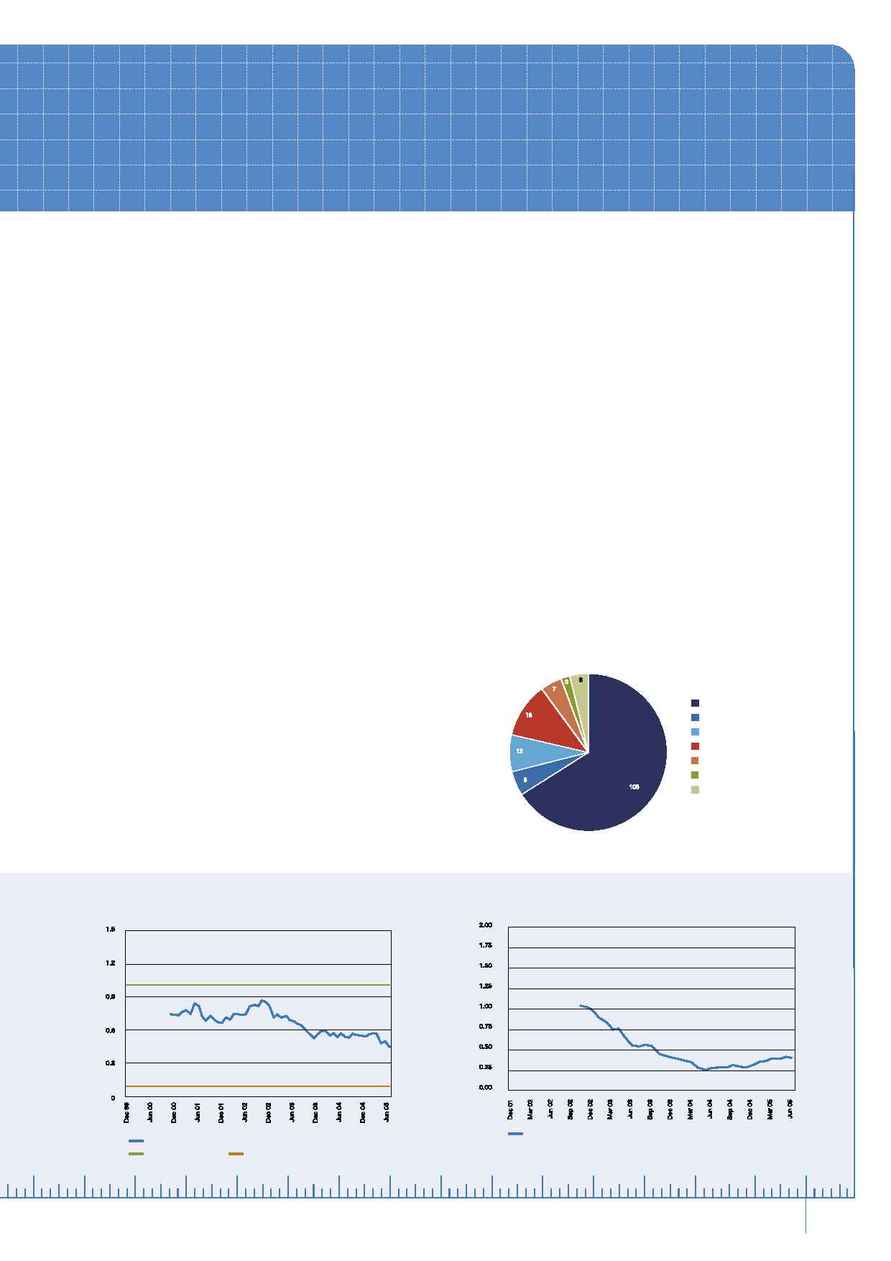
19
Health and Safety
During 2004, City Care re-organised its health and safety
structure to place more focus on workplace teams, which
were renamed as Health and Safety Committees and given
recognition under the Health and Safety in Employment Act.
The Committees report to a company-wide Health and Safety
Steering Committee.
Health and Safety Representatives were also given a greater
profile and have become more involved in conducting safety
audits on worksites and accident investigations. During the year
City Care adapted its health and safety training and competency
systems to meet the requirements of Roading New Zealand's
"Operate Safe" system.
Towards the end of the financial year, we created a project team
to work on implementing Behave Safe, a behavioural-based
health and safety programme to help keep our staff safe at work
and reduce our rate of near hits and accidents.
As illustrated in the graphs below, while the frequency of lost
time injury accidents dropped during the latter part of the year,
the severity of the accidents occurring has increased slightly
during the year. This reinforces our decision to focus on new
ways of making our employees safer at work.
City Care has retained certification of the company's health and
safety management systems to NZS 4801 and ACC tertiary
level. Our major competitors are also either secondary or tertiary
accredited or are in the ACC partnership programme.
CITY CARE FREQUENCY OF
LOST TIME INJURY ACCIDENTS
Rolling 12 months
NZ industry average
Australia industry average
Staff Recruitment and Retention
City Care continued to grow rapidly, with staff numbers increasing
by more than 200 during the year to reach around 840 (including
casual staff) at the end of the reporting period.
Staff turnover increased significantly to 23% (compared to
15% last year). 15% of those leaving the company this year
did so voluntarily.
Redundancies accounted for 12 of those who left. These were
primarily in Auckland as a result of the business moving out of
the underground drilling and construction markets, which were
proving unprofitable.
This year we also had 18 staff leave us from the refuse stations
when this business was sold to Christchurch City Council and
staff were transferred to the management of the Recovered
Materials Foundation, the new provider of these services.
CITY CARE SEVERITY OF INJURY HOURS
LOST AS PERCENTAGE HOURS WORKED
Rolling 12 months
L
TI accidents per 10,000 hrs worked
Resigned
Retired
Redundancy
Sale of business transfer
Frustration of contract
Abandonment
Dismissed
REASONS FOR STAFF TURNOVER 04/05
Per
centage
